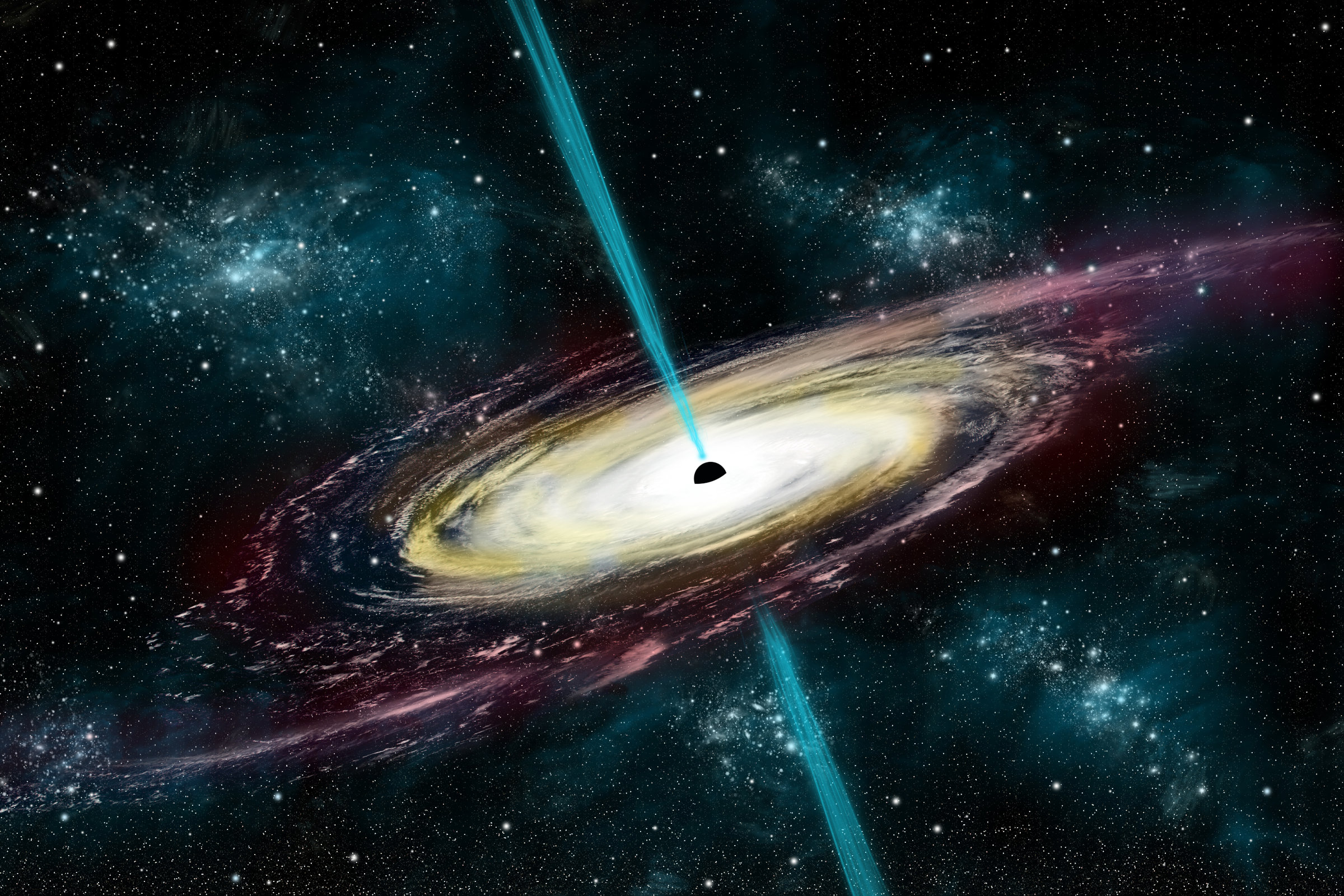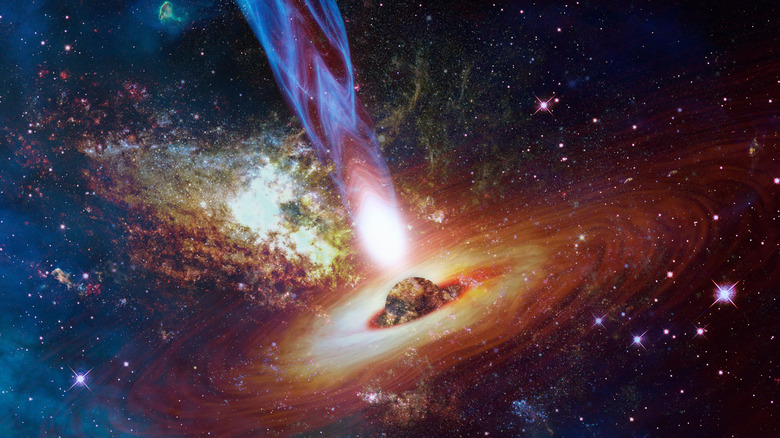Astronomers Spotted A Long Jet Shooting Out Of A Quasar 7.5 Billion Light-Years Away
The Event Horizon Telescope has given us some surprising views into our universe since 2009. Not only has it given us the first-ever image of a black hole, but it also gave us the first look at our own galaxy's supermassive black hole. Now, the EHT team has used the telescope to peer into a quasar, which is currently emitting a long, curvy jet deep into space.
Enter NRAO 530, a bright quasar located roughly 7.5 billion light-years away. According to a global team of scientists, it is the most distant object that the Event Horizon has imaged thus far. Further, because the quasar is currently unleashing a massive jet of radiation, astronomers are even more intrigued by the object.
Quasars are essentially active galactic nuclei that are powered by massive black holes as they suck in literal tons of matter. This matter powers the bright look of the quasar, and these objects tend to spew massive streams of radiation back into space. That seems to be the case with this quasar, especially, which is currently spewing out a long jet of radiation that is extremely long and curvy.

According to the researcher's findings, they imaged a jet of radio-wavelength radiation that spans as far as 1.7 light-years out into space. The team also used the Event Horizon Telescope to peer into the quasar's core, where the jet of radiation begins. There they spotted two mysterious structures that the EHT is unable to properly make out due to its technical capabilities.
While they can't identify the structures yet, future observations of quasars like NRO 530 will likely provide more information for scientists to dig into once we've upgraded the technical capabilities of our best telescopes. Additionally, observations made with the James Webb could perhaps teach us more about this quasar and the mysteriously long jet that it's currently spewing into space.
In the meantime, the scientists at least have some information to build off of as they continue to inspect the universe using the Event Horizon Telescope to its fullest capabilities.
